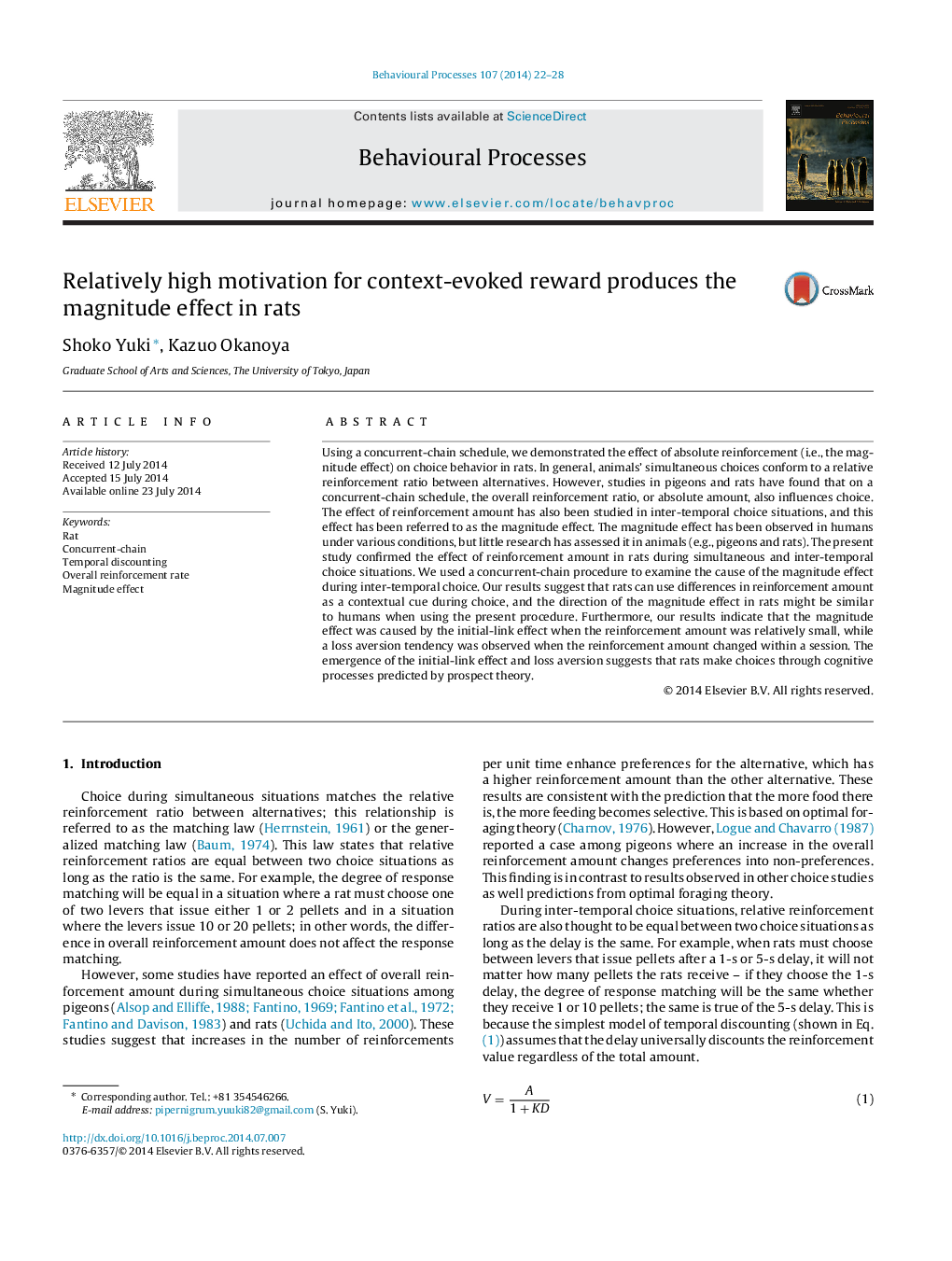| Article ID | Journal | Published Year | Pages | File Type |
|---|---|---|---|---|
| 8497232 | Behavioural Processes | 2014 | 7 Pages |
Abstract
Using a concurrent-chain schedule, we demonstrated the effect of absolute reinforcement (i.e., the magnitude effect) on choice behavior in rats. In general, animals' simultaneous choices conform to a relative reinforcement ratio between alternatives. However, studies in pigeons and rats have found that on a concurrent-chain schedule, the overall reinforcement ratio, or absolute amount, also influences choice. The effect of reinforcement amount has also been studied in inter-temporal choice situations, and this effect has been referred to as the magnitude effect. The magnitude effect has been observed in humans under various conditions, but little research has assessed it in animals (e.g., pigeons and rats). The present study confirmed the effect of reinforcement amount in rats during simultaneous and inter-temporal choice situations. We used a concurrent-chain procedure to examine the cause of the magnitude effect during inter-temporal choice. Our results suggest that rats can use differences in reinforcement amount as a contextual cue during choice, and the direction of the magnitude effect in rats might be similar to humans when using the present procedure. Furthermore, our results indicate that the magnitude effect was caused by the initial-link effect when the reinforcement amount was relatively small, while a loss aversion tendency was observed when the reinforcement amount changed within a session. The emergence of the initial-link effect and loss aversion suggests that rats make choices through cognitive processes predicted by prospect theory.
Related Topics
Life Sciences
Agricultural and Biological Sciences
Animal Science and Zoology
Authors
Shoko Yuki, Kazuo Okanoya,
